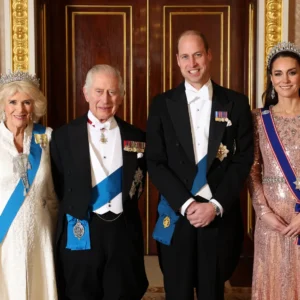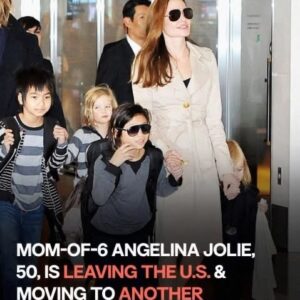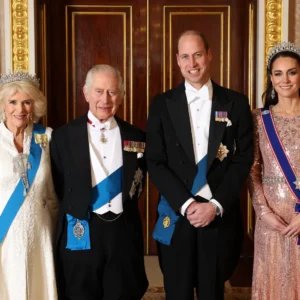Albanian television station Zjarr has carved out a distinctive, and controversial, niche in the media world. Its bold programming choices have sparked debate and attention both locally and internationally. A few years ago, Zjarr became the subject of heated discussion when it aired news segments featuring anchors in unconventional attire, or rather, the notable lack of it. Instead of traditional suits or casual business wear, these anchors presented the news wearing open jackets without any undershirts, a choice that was both sensational and symbolic. This approach has continued to stir reactions, with some calling it innovative, while others see it as crossing a line.
This decision is part of a larger discourse on gender equality and dignity for women in the workplace. The station’s choice challenges norms in a country with a conservative culture, especially around media and public presentation. Albania’s historical backdrop underpins much of this societal framework; for four decades, the nation was under the rule of Enver Hoxha, a strict communist leader known for his rigid censorship and authoritarian control. Public expression was limited, and media outlets were tightly controlled, making unbiased news a rarity. With this background, Zjarr’s owner, Ismet Drishti, explained that the choice to feature braless news anchors was an effort to deliver news “as it is,” aiming to appear transparent and free from political influence. According to Drishti, in a country where the government often controls the media, Zjarr sought to offer something different — a “naked truth” in every sense of the term.
From a publicity standpoint, the tactic achieved its goal. The attention generated by this approach was significant. By featuring female anchors in daring outfits, Zjarr attracted high viewership and became widely recognized in Albania and beyond. This bold move not only put the station on the map but also turned its anchors into stars, particularly Enki Bracaj. Aged just 21 when she took on the role, Bracaj’s untraditional appearance on-screen generated a substantial following and became a topic of national conversation. She shared that she made this choice to stand out in the competitive world of broadcast journalism, consulting with her family, who gave their support. With her distinctive presentation style, Bracaj became a recognizable face, with her unconventional approach apparently resonating with viewers.
However, Bracaj’s career took a sudden turn when she accepted a modeling opportunity with Playboy. Though she initially left Zjarr reportedly over salary dissatisfaction, insiders suggested that her association with Playboy conflicted with the station’s boundaries, despite its avant-garde image. In a country where conservative values still hold strong, her departure highlighted the cultural complexities and sensitivities around nudity and representation in the media. The dismissal of Bracaj left Zjarr with the need to find a replacement, and they soon introduced Greta Hoxhaj, a 24-year-old presenter who quickly filled Bracaj’s shoes, continuing the unconventional tradition.
Hoxhaj, with a background in local television, relished the opportunity. She embraced the provocative format, finding that it provided her with an unprecedented level of recognition. Hoxhaj spoke openly about how she went unnoticed for years on local television but, after just three months on Zjarr, became a household name. Each day, she would transform for the camera, choosing a revealing jacket, usually in a shade of pink, and confidently presenting the day’s headlines. For her, this on-screen persona was just another aspect of her work, a role she inhabited daily for the show.
The use of scantily clad anchors at Zjarr, however, has faced criticism as well. Though the format attracted viewers, it raised concerns about objectification, sexism, and media responsibility. Many argue that the presentation style detracts from the professionalism expected in news reporting, with some viewers voicing strong opinions online. Images of the presenters went viral on social media, with clips garnering hundreds of thousands of views. As some celebrated the station’s boldness, others condemned it as a blatant ploy for ratings that compromised the integrity of news media. Many comments critiqued the approach as being “disgustingly sexist,” while others debated whether television should hold itself to a higher standard of presentation and decorum. The Zjarr anchors became symbols in a larger conversation about the treatment of female broadcasters and the lines between entertainment and journalism.
Interestingly, the Albanian feminist and journalistic communities have had a mixed response to Zjarr’s approach. While some vocal groups have expressed their dissatisfaction, many have remained silent on the matter. Leonard Olli, a journalist and PR expert, offered his perspective, suggesting that viewers ultimately have the freedom to choose what to watch. However, Aleksander Cipa, head of the Union of Albanian Journalists, questioned the effectiveness of nudity in solving the underlying challenges facing media today, expressing his belief that the strategy is unsustainable for a truly reliable news source.
Amid all the attention, Greta Hoxhaj, Zjarr’s current star, seems to take it all in stride. Although her appearances spark ongoing conversations, she appears largely unfazed by the criticism and scrutiny. Instead, she sees her work as a blend of professional duty and newfound fame, grateful for the support she receives from her local community. Hoxhaj shares that her inbox is filled with positive messages from viewers, and she regularly receives flowers from fans. These gestures remind her of the connection she has built with her audience, even if it is based on a contentious presentation style.
As the controversy around Zjarr continues, the debate over style versus substance in journalism remains active. Zjarr’s choices highlight the lengths to which some media outlets are willing to go to capture audience attention in an increasingly competitive industry. The reactions to Zjarr’s approach reveal much about the dynamics of viewership, cultural values, and the evolving standards of media. Whether one considers this approach to be inventive or merely a gimmick, it raises important questions about the future of journalism and the lengths stations will go to attract viewers.
Ultimately, Zjarr’s approach demonstrates the power of media to challenge societal norms, even if that challenge is controversial. Whether the use of sensationalism in news will persist as a successful tactic remains uncertain, but for now, Zjarr has certainly achieved its goal of making a mark on the industry. Some may applaud the channel’s boldness, while others may wish for more restraint, but there is no denying the impact Zjarr has had in reshaping the conversation about presentation and integrity in television news. In the end, the Albanian audience, and viewers around the world, are left to decide for themselves whether this approach adds value to journalism or simply exploits it for ratings.





